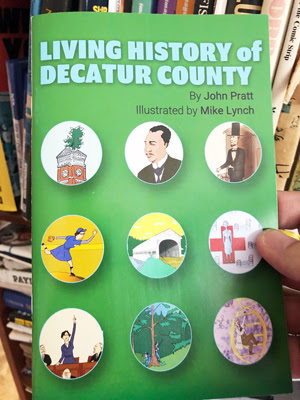When you're drawing a new character or something you haven't drawn before -- is it difficult?
Yes. I'll draw it the wrong way a couple of times before I can get something that's good. Cows, for instance, are a problem, despite my having lived on a farm when I was little. Obviously, there are a lot of good Web search engines to use for reference, so it's easy now to draw, for instance, a WW1 infantry soldier or a specific car or something.
What is the format for magazine gag cartoons?
I draw on a piece of typing paper. I place it horizontally in front of me, so most of my cartoons are kinda horizontal. I use good quality typing paper. Right now, I'm using a 24 lb., 92 bright, 30% recycled paper. It's cheap and easy to store. Don Orehek turned me on to Micron pens, which will take a wash immediately. No smearing!
Back to the format. Most magazines just don't care. They can shrink the cartoons and make them fit, no problem. A couple of magazines may ask for a change. Playboy will tell you how many columns wide they want the cartoon. The editor will help you translate picas (the measurement for magazine columns) to inches. As mentioned before, Wall Street Journal publishes cartoons in a teeny weeny petite square, so the cartoons must fit that format.

 Above: my approved rough for the Wall Street Journal, along with an editor's note asking for a redraw.
Above: my approved rough for the Wall Street Journal, along with an editor's note asking for a redraw.Do you draw all your cartoons in black and white? Do the publications color the cartoons or does the cartoonist? If the cartoonist colors them, then how? By hand? Computer?
I draw my submissions in B&W. I don't mail penciled roughs, which was the habit a generation ago. Now I tend to mail out finished cartoons, with wash tones. A big reason for this is that some magazines tend to change cartoon editors and I'd rather have something that looks like the finished art in front of them.
When an editor buys a cartoon, then he or she may ask for it to be colored. In general, magazines pay more for color.
The cartoonist does the coloring. I use PhotoShop, but that's not the rule.
I was talking with a cartoonist -- a cartoonist whose been in the industry since the 1950s -- and he was bemoaning that he didn't have ANY computer knowledge and how everything is all done on computers now. I told him that I thought he was mistaken. I still draw on paper and scan it in to the computer. So he counters with, "Yeah, but all the coloring -- it's all being done on computer." I happened to have a copy of Reader's Digest with me. Paging thru it, I found one cartoon that was colored on the computer (mine). The rest of them -- 5 cartoons -- sure looked like they were colored by hand. I know Dan Reynolds does all his coloring by hand.
--
This has been a rerun of a July, 2007 Mike Lynch Cartoons blog entry.








4 comments:
What do you use for washes? I just bought a set of cool gray markers (20-40%) but I haven't had a chance to try them yet.
You're right about many people still drawing by hand, Mike. I still do, anyway.
John, I use gray markers too. Some times you may be able to come close to replicating a wash look, but not always. For a real wash you have to use a brush and ink.
I still draw everything by hand from pencil to ink to color (pastels, ink, color pencil)
Most people look at my work and think I use watercolor.
I have always believed in doing a married approach between the art and computer, the later I use for scanning original work and sending my work.
I use 100 lb Bristol paper. It is more expensive, but I spend a lot of time on my work and, for me, lots of my work is more art intensive. The ink is very important. It has to be archival, water and smudge proof.
I use 28 lb. 98 bright letter size laser paper. Inks: Micron pigma pens. Wash: kids' watercolor -- these sets you get for $2.99 in a drug store.
Post a Comment